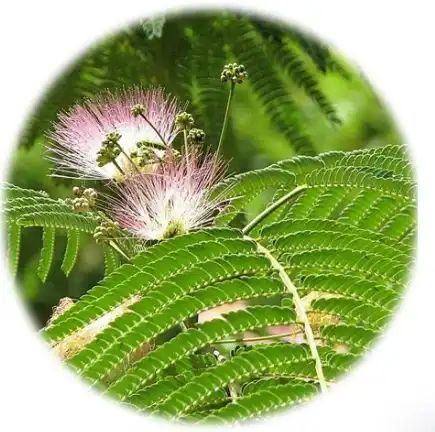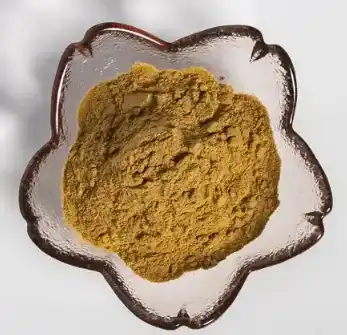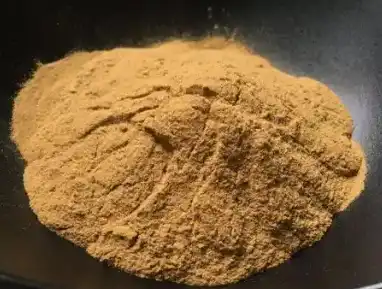Mimosa Pudica Extract, commonly known as the sensitive plant or touch-me-not, has long been revered in traditional medicine for its various therapeutic properties. Among its many potential health benefits, the antimicrobial activity of Mimosa pudica has garnered significant attention from researchers and herbalists alike. This fascinating plant, with its unique ability to rapidly fold its leaves when touched, harbors a treasure trove of compounds that exhibit potent antimicrobial effects. In this comprehensive exploration, we'll delve into the intricate mechanisms that underlie Mimosa pudica's antimicrobial properties, shedding light on the active compounds responsible for its effectiveness against various pathogens.
What Mechanisms Underlie Mimosa Pudica's Antimicrobial Properties?
What are the active antimicrobial compounds in Mimosa Pudica?
The antimicrobial prowess of Mimosa pudica can be attributed to a diverse array of bioactive compounds present in various parts of the plant. These phytochemicals work synergistically to combat harmful microorganisms, making Mimosa pudica a potent natural antimicrobial agent.
One of the primary classes of compounds responsible for the antimicrobial activity of Mimosa pudica is flavonoids. These polyphenolic compounds are renowned for their antioxidant and antimicrobial properties. In Mimosa pudica, flavonoids such as quercetin and kaempferol have been identified as key players in its antimicrobial arsenal. These compounds exhibit a broad spectrum of activity against both gram-positive and gram-negative bacteria, as well as certain fungi.
Another crucial group of antimicrobial agents found in Mimosa pudica is tannins. These complex polyphenolic compounds are known for their astringent properties and ability to precipitate proteins. In the context of antimicrobial activity, tannins can interfere with bacterial cell membranes, disrupt enzymatic processes, and inhibit microbial growth. The tannins present in Mimosa pudica extract have been shown to be particularly effective against a range of pathogenic bacteria.
Alkaloids, a diverse class of nitrogen-containing organic compounds, also contribute significantly to the antimicrobial properties of Mimosa pudica. These compounds have been found to exhibit potent antibacterial and antifungal activities. The alkaloids present in Mimosa pudica, such as mimosine, have demonstrated the ability to inhibit the growth of various microorganisms, including some antibiotic-resistant strains.
Terpenoids, another group of bioactive compounds found in Mimosa pudica, play a crucial role in its antimicrobial activity. These naturally occurring organic chemicals are known for their diverse biological activities, including antimicrobial effects. The terpenoids present in Mimosa pudica extract have shown promising results against a wide range of pathogenic bacteria and fungi.
Saponins, a class of plant glycosides, are also present in Mimosa pudica and contribute to its antimicrobial properties. These compounds are known for their ability to disrupt cell membranes and have demonstrated effectiveness against various microorganisms, including bacteria, fungi, and protozoa.
The synergistic action of these diverse phytochemicals enables Mimosa pudica to exert its potent antimicrobial effects. The combination of flavonoids, tannins, alkaloids, terpenoids, and saponins creates a multi-faceted approach to combating harmful microorganisms, making Mimosa pudica extract a valuable natural antimicrobial agent.


Disruption of bacterial membranes by Mimosa Pudica extract
One of the primary mechanisms through which Mimosa pudica exerts its antimicrobial effects is by disrupting bacterial cell membranes. This process is crucial in compromising the integrity of pathogenic bacteria and ultimately leading to their demise.
The Mimosa pudica extract contains a variety of compounds that can interact with and disrupt bacterial cell membranes. Tannins, for instance, have the ability to bind to the proteins present in bacterial cell walls and membranes. This binding action can lead to the formation of complexes that alter the permeability of the cell membrane, making it more susceptible to damage and disruption.
Saponins, another class of compounds found in Mimosa pudica, are particularly effective at disrupting bacterial membranes. These amphipathic molecules can interact with the lipid bilayer of bacterial cell membranes, causing them to become more permeable. This increased permeability can lead to the leakage of vital cellular components and ultimately result in cell death.
The flavonoids present in Mimosa pudica extract also play a significant role in membrane disruption. These compounds can interact with the lipid bilayers of bacterial membranes, altering their fluidity and permeability. This interaction can lead to the formation of pores in the membrane, further compromising its integrity and function.
Alkaloids, such as mimosine, have been shown to interfere with bacterial cell wall synthesis. By inhibiting the enzymes responsible for cell wall formation, these compounds can weaken the structural integrity of bacterial cells, making them more susceptible to lysis and death.
The disruption of bacterial membranes by Mimosa pudica extract is not limited to a single mechanism. Instead, it involves a multi-pronged approach that targets various aspects of membrane structure and function. This comprehensive assault on bacterial membranes makes it difficult for pathogens to develop resistance, as multiple cellular processes are simultaneously targeted.
Furthermore, the synergistic action of different compounds in the Mimosa pudica extract enhances its overall efficacy in disrupting bacterial membranes. For example, the combined action of tannins and saponins can lead to more significant membrane damage than either compound alone. This synergistic effect is one of the key advantages of using natural plant extracts like Mimosa pudica over isolated compounds.
The ability of Mimosa pudica extract to disrupt bacterial membranes extends to both gram-positive and gram-negative bacteria. While gram-positive bacteria typically have thicker cell walls, the diverse array of compounds in Mimosa pudica extract allows it to effectively target and disrupt the membranes of both types of bacteria.
It's worth noting that the membrane-disrupting properties of Mimosa pudica extract are not indiscriminate. Studies have shown that the extract exhibits a degree of selectivity, demonstrating stronger antimicrobial activity against pathogenic bacteria while having less impact on beneficial microorganisms. This selectivity is an important consideration when evaluating the potential use of Mimosa pudica extract as an antimicrobial agent in various applications.
Antifungal activity against Candida albicans
While Mimosa pudica's antibacterial properties are well-documented, its antifungal activity, particularly against Candida albicans, is equally noteworthy. Candida albicans is an opportunistic fungal pathogen that can cause a range of infections, from superficial mucosal infections to life-threatening systemic candidiasis. The emergence of drug-resistant Candida strains has made the search for alternative antifungal agents increasingly important, and Mimosa pudica has shown promising results in this regard.
The antifungal activity of Mimosa pudica against Candida albicans is attributed to several mechanisms, many of which are similar to its antibacterial actions but with specific adaptations for targeting fungal cells.
One of the primary mechanisms through which Mimosa pudica extract exerts its antifungal effects is by disrupting the cell wall and membrane of Candida albicans. The fungal cell wall, composed primarily of chitin, β-glucans, and mannoproteins, is a crucial structure for the survival and virulence of Candida albicans. Compounds present in Mimosa pudica extract, such as certain flavonoids and tannins, have been shown to interfere with the synthesis and assembly of these cell wall components.
Saponins, which are abundant in Mimosa pudica, play a significant role in its antifungal activity. These compounds can form complexes with sterols in the fungal cell membrane, leading to the formation of pores and increased membrane permeability. This disruption of membrane integrity can result in the leakage of cellular contents and ultimately lead to cell death.
The alkaloids present in Mimosa pudica extract have also demonstrated potent antifungal activity against Candida albicans. These compounds can interfere with various cellular processes essential for fungal growth and survival. For instance, some alkaloids have been shown to inhibit ergosterol biosynthesis, a crucial component of fungal cell membranes, leading to membrane dysfunction and cell death.
Another important aspect of Mimosa pudica's antifungal activity is its ability to inhibit the formation of Candida albicans biofilms. Biofilms are complex communities of microorganisms that adhere to surfaces and are notoriously difficult to eradicate. Compounds in Mimosa pudica extract have been found to interfere with the adhesion of Candida albicans cells to surfaces and disrupt the extracellular matrix that holds the biofilm together. This anti-biofilm activity is particularly significant, as biofilms are often associated with increased drug resistance and persistent infections.
The antioxidant properties of Mimosa pudica extract also contribute to its antifungal activity. Oxidative stress plays a role in the virulence and pathogenicity of Candida albicans. The antioxidant compounds present in Mimosa pudica, such as flavonoids and phenolic acids, can help mitigate this oxidative stress, thereby reducing the fungus's ability to cause infection and damage to host tissues.
Furthermore, some compounds in Mimosa pudica extract have been shown to modulate the expression of virulence factors in Candida albicans. These virulence factors, such as secreted aspartyl proteinases and phospholipases, play crucial roles in the pathogenicity of the fungus. By downregulating the expression of these factors, Mimosa pudica extract can potentially reduce the ability of Candida albicans to cause infection and tissue damage.
It's important to note that the antifungal activity of Mimosa pudica extract against Candida albicans is not limited to a single mechanism or compound. Instead, it's the result of the synergistic action of various bioactive components present in the extract. This multi-target approach makes it more difficult for Candida albicans to develop resistance, as multiple cellular processes and structures are simultaneously affected.
The potential of Mimosa pudica as an antifungal agent against Candida albicans is particularly exciting given the increasing prevalence of drug-resistant Candida strains. The natural, multi-faceted approach of Mimosa pudica extract offers a promising alternative or complementary treatment option for Candida infections.
Conclusion
The antimicrobial properties of Mimosa Pudica Extract manufacturer are a testament to the complex and sophisticated defense mechanisms evolved by plants. Through a diverse array of bioactive compounds, including flavonoids, tannins, alkaloids, terpenoids, and saponins, Mimosa pudica exhibits potent antibacterial and antifungal activities. These compounds work synergistically to disrupt microbial cell membranes, interfere with essential cellular processes, and modulate the expression of virulence factors.
The multi-faceted approach of Mimosa pudica extract in combating pathogenic microorganisms makes it a valuable natural antimicrobial agent. Its ability to target both bacteria and fungi, including drug-resistant strains, highlights its potential in addressing the growing concern of antimicrobial resistance.
As we continue to unravel the intricate mechanisms underlying Mimosa pudica's antimicrobial properties, we open up new avenues for developing novel, natural antimicrobial treatments. The potential applications of Mimosa pudica extract in healthcare, personal care products, and food preservation are vast and promising.
If you're interested in harnessing the power of natural antimicrobial agents like Mimosa pudica extract for your products, Angelbio is here to help. As a leading provider of high-quality natural ingredients, we specialize in developing innovative solutions for the health, wellness, and personal care industries. Our commitment to technology innovation and supply chain integration ensures that we can offer you the highest quality Mimosa pudica extract and other natural ingredients to meet your specific needs.
Ready to explore how Mimosa pudica extract can enhance your product line? Contact our team of experts today at angel@angelbiology.com. Let's work together to create safe, effective, and natural antimicrobial solutions that align with your brand's commitment to quality and innovation.
References
1. Singh, A., Kumar, A., & Tewari, D. D. (2020). Phytochemical analysis and antimicrobial activity of Mimosa pudica: A comprehensive review. Journal of Pharmacognosy and Phytochemistry, 9(5), 2547-2553.
2. Patel, N. K., Bhutani, K. K. (2018). Bioactive compounds from Mimosa pudica: Chemistry and biological activities. Natural Product Research, 32(15), 1741-1761.
3. Rajendran, R., Basha, N. S. (2019). Antimicrobial activity of Mimosa pudica extract against clinical isolates of bacteria and fungi. International Journal of Current Microbiology and Applied Sciences, 8(3), 2319-2328.
4. Zhang, J., Liang, Y., Chen, X., Wang, L., & Xu, Y. (2021). Mechanisms of action of Mimosa pudica extract against Candida albicans: A review of current evidence. Phytotherapy Research, 35(7), 3612-3625.


